How to Plant Oxalis Triangularis or Butterfly Plant: [Complete Guide]
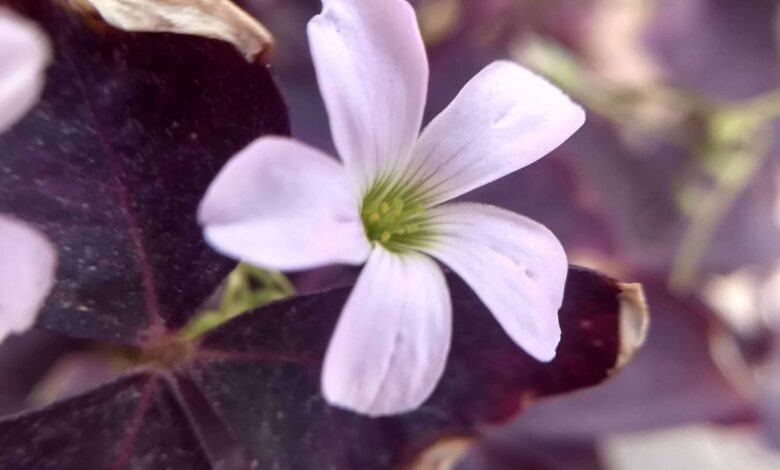
If you like plants, but you want to get out of the typical green color of its leaves, it has come to you the time to grow a oxalis triangularis .
This beautiful plant is also known as a butterfly and it is not surprising because it has outstanding characteristics that give it a similar shape to this insect.
In addition, its leaves have a cutepurple hue that can make your indoor garden stand out like no other.
Are you already attentive to know everything about its sowing and cultivation? Then let’s move on.
- When? The best time is in spring .
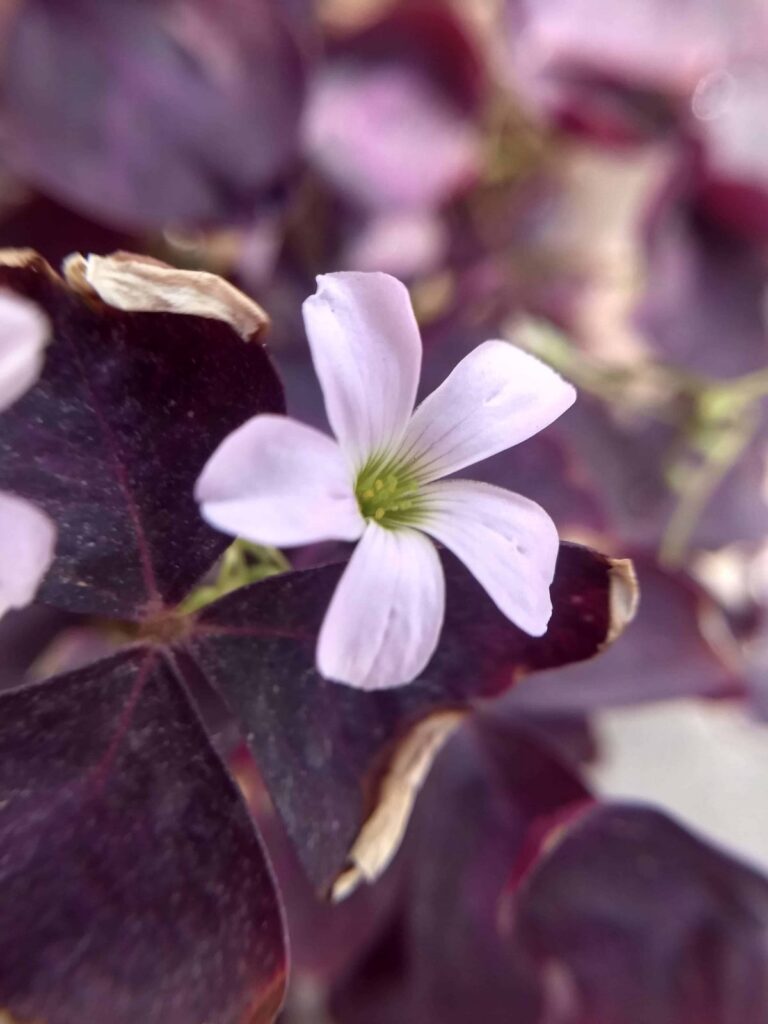
- Where? They are delicate plants outdoors , so it is preferable to plant it indoors.
- Growing time? In the right conditions, it grows very fast.
- How do we prepare the land? With a good contribution of compost and organic matter, in addition to being loose and draining well.
- How do we water? It needs constant watering, although without flooding the earth. It is ideal with a watering can or a sprayer.
- Favorable associations? Other butterfly plants.
- Unfavorable associations? You have to be careful because being aclover plant , if we plant it outside and it gains strength it can expand a lot and without control.
- Plagues and diseases? Mold and blight mainly.
When to sow oxalis triangularis?
Due to the temperature range in which it feels most comfortable to grow and develop, the best time to plant the butterfly plant is in spring.
In addition, it is precisely during this time that the plant begins the process of dividing rhizomes that are responsible for providing the materials for new plants.
Luckily, it is a plant that does not demand excessive care , so it can be disposed of in good condition without spending much time on it.
Where to plant the butterfly plant?
The main thing is to know that it is an indoor plant and this is because it is not able to withstand the limits in temperatures.
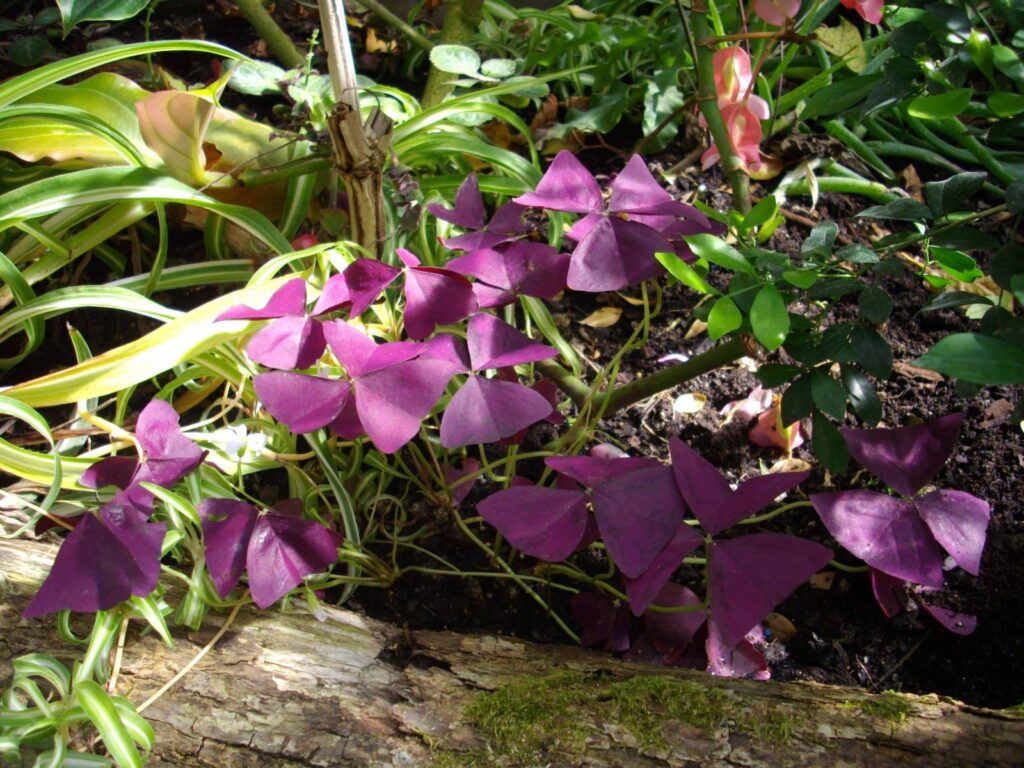 However, this does not mean that you do not need your winter rest . But this rest should be done around 10º C.
However, this does not mean that you do not need your winter rest . But this rest should be done around 10º C.
Another important detail to know where to place it is in relation to sun exposure.
This is a very particular matter of this species, since its leaves and presence vary depending on the way in which the sun’s rays hit it.
It is important that these do not give you so directly , but they are enough.
How do we prepare the land for cultivation?
The choice of a good soil is decisive for the oxalis triangularis to prosper as it should.
As for acidity, it is better that the soil pH is around 4 and 5 points.
Before sowing, it will be very worthwhile to nurture the area where it will be sown with compost .
This layer of compost should be removed with the soil already prepared to a height of approximately 20 centimeters.
How do we water the oxalis triangularis?
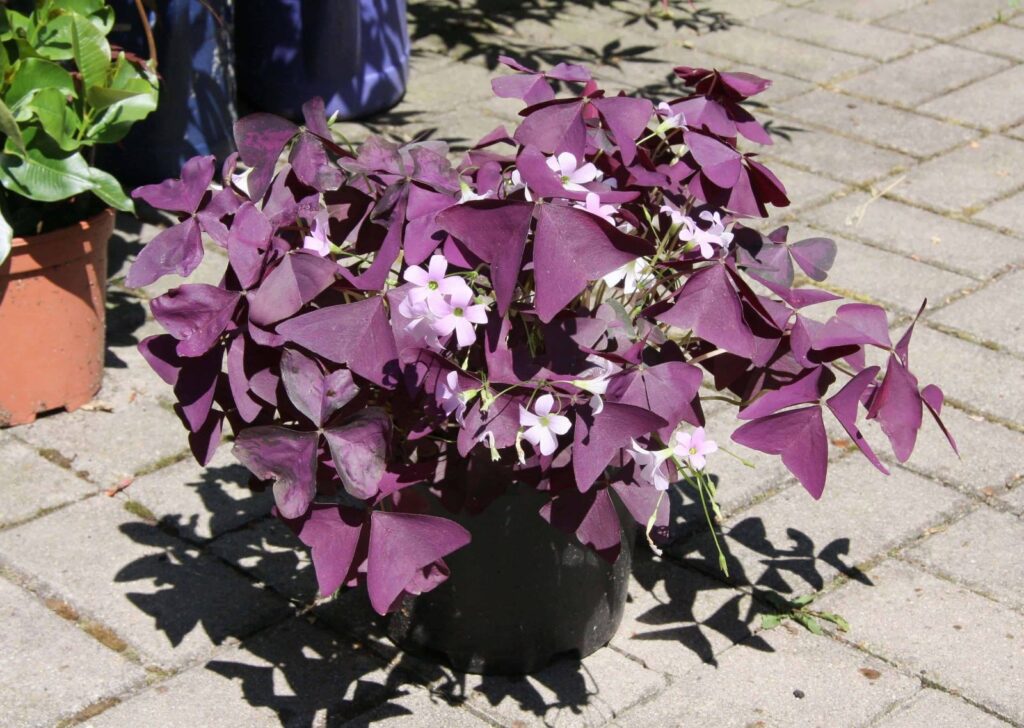 To have a long and good life, oxalis triangularis needs constant watering.
To have a long and good life, oxalis triangularis needs constant watering.
But everything will depend on the season, because during the winter this process will not be necessary , that is, they are suspended as soon as the autumn ends .
And it is right there that it is necessary to know that at this time it tends to wither, and then sprout again in the spring.
It is a warning, to avoid getting nerves to see her in that state.
The frequency will go around the humidity that is noticeable in the earth and that can be assessed just by touching it.
If it is the first time you have a plant of these , the evaluations can be done for a few weeks until you establish the appropriate pattern.
How do we sow oxalis triangularis step by step?
The oxalis plant can thrive in any soil, but always it is important that it has good drainage.
That’s a point to be clear on before moving on to the next step-by-step:
- Have a good size pot with holes at the bottom that allow the water to drain and the roots to breathe.
- Planting soil will be added to it and the container will be filled more or less halfway.
- Inside this a hole will be opened that is wide enough to introduce the plant with its root and arrange it comfortably.
- Then all the remaining space will be covered with dirt.
- At the end of this phase, it will be necessary to water abundantly but without flooding. The next time to do this procedure will be when you notice that all the moisture dries up.
- If what you want is to see it bloom , you will not have to wait long because between 6 and 8 weeks it does the work.
What favorable associations does it have?
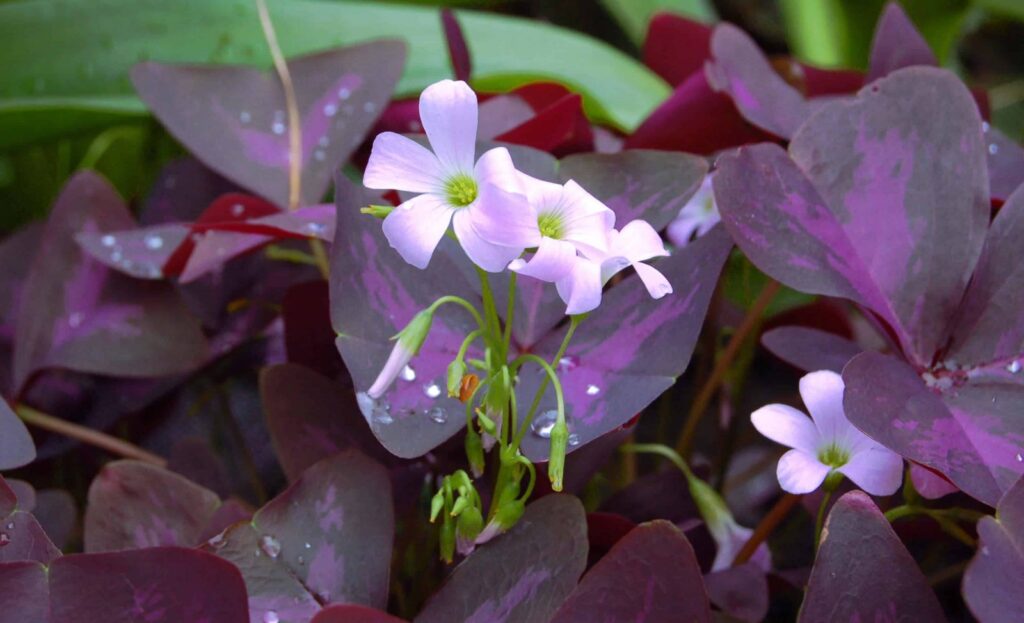 However, you have to be careful because in this environment it can grow really fast and uncontrolled (it can be considered a fast growing plant ).
However, you have to be careful because in this environment it can grow really fast and uncontrolled (it can be considered a fast growing plant ).
That is why people who know the subject prefer to keep them in pots as indoor plants.
The fact is that oxalis also gets along very well with itself.
This means that the best association What you can do in a large pot is with the cultivation of other plants of this same type.
Another very important fact is that, although they are not in the same pot, oxalis is very easy to accompany plants with other characteristics.
In this way you will obtain a careful setting where the characteristic green of the plants will contrast with the purple of the oxalis. Beautiful, no?
What pests and diseases does it have?
There is a wide range of possible conditions that oxalis can suffer from during their lifetime.
Mold
Mold is one of the most frequent diseases that can attack it and is generated by the presence of small yellow dots on the leaves.
This is like a sign of oxidation that can become more severe as time progresses.
It can also affect other nearby plantations, such as corn .
The blight
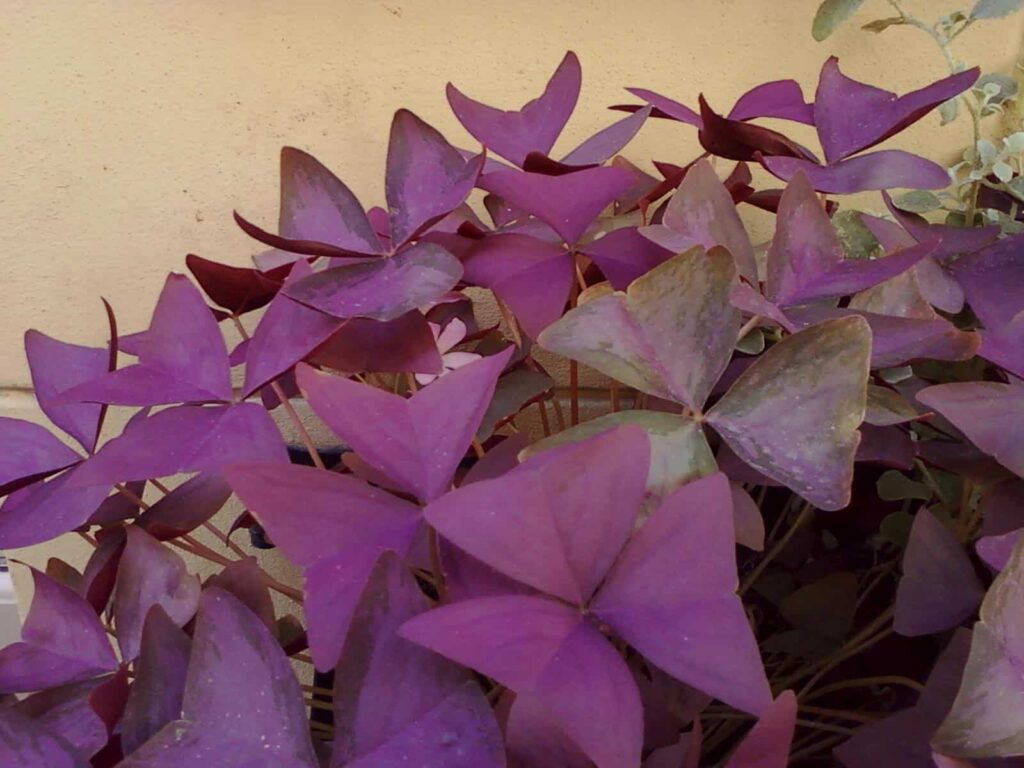 There is also the blight that although it does not exert any harmful effect on the plant from the outside, it affects the interior with concern.
There is also the blight that although it does not exert any harmful effect on the plant from the outside, it affects the interior with concern.
This fungus generates, in short, that the plant cannot reproduce its rhizomes normally.
A very important detail with this type of plants is that they contain in their composition oxalate salts.
These salts when mixed with the calcium in the body of certain animals can cause kidney damage.
In general, it is not so chronic unless it is horses or cattle , so it is always advisable to keep it indoors and not in open fields.
Even with this, it is a beautiful plant that everyone would like to have as an ornament in the hall.
Until next time!

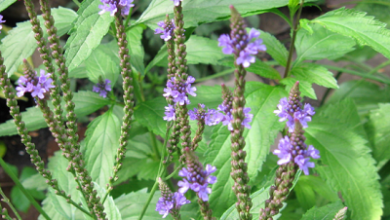
![Photo of Ghost Pepper: [Characteristics, Cultivation, Care and Disadvantages]](https://www.complete-gardening.com/wp-content/uploads/2022/08/ghost-pepper-characteristics-cultivation-care-and-disadvantages-390x220.jpg)
![Photo of Agerato: [Cultivation, Irrigation, Care, Pests and Diseases]](https://www.complete-gardening.com/wp-content/uploads/2022/08/agerato-cultivation-irrigation-care-pests-and-diseases-390x220.jpg)
